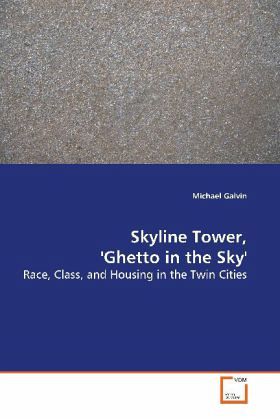
Skyline Tower, 'Ghetto in the Sky'
Race, Class, and Housing in the Twin Cities
Versandkostenfrei!
Versandfertig in 6-10 Tagen
32,99 €
inkl. MwSt.

PAYBACK Punkte
16 °P sammeln!
This is the history of Skyline Tower, the largest single-building housing project in the United States west of Chicago. Built in a neighborhood with a scarred past just blocks from one of Minnesota s wealthiest neighborhoods on a precipice overlooking a major interstate highway, and constructed and managed by a for-profit corporation receiving government subsidies during most of its history, the story of Skyline Tower demonstrates how the confluence of disparate trends produces a situation of relative advantage/disadvantage in racially hierarchical systems such as the United States. These tren...
This is the history of Skyline Tower, the largest
single-building housing project in the United States
west of Chicago. Built in a neighborhood with a
scarred past just blocks from one of Minnesota s
wealthiest neighborhoods on a precipice
overlooking a major interstate highway, and
constructed and managed by a for-profit corporation
receiving government subsidies during most of its
history, the story of Skyline Tower demonstrates how
the confluence of disparate trends produces a
situation of relative advantage/disadvantage in
racially hierarchical systems such as the United
States. These trends include changes in the public
reputation of the building including significant
social and demographic shifts, and transformations
in the role of government, public discourse, and
capitalism in the United States.
single-building housing project in the United States
west of Chicago. Built in a neighborhood with a
scarred past just blocks from one of Minnesota s
wealthiest neighborhoods on a precipice
overlooking a major interstate highway, and
constructed and managed by a for-profit corporation
receiving government subsidies during most of its
history, the story of Skyline Tower demonstrates how
the confluence of disparate trends produces a
situation of relative advantage/disadvantage in
racially hierarchical systems such as the United
States. These trends include changes in the public
reputation of the building including significant
social and demographic shifts, and transformations
in the role of government, public discourse, and
capitalism in the United States.












